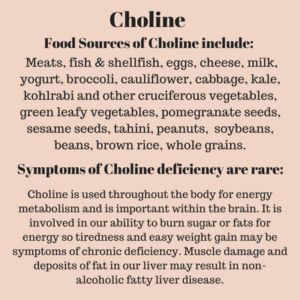In case you missed World Kidney Day (March 8) today is a good day to appreciate kidney health. The pair of kidneys or single kidney clean the body of daily acidic waste from metabolism and dietary sources and remove other excess minerals and toxins. Adequate water is essential for kidney health as dehydration can cause damage that may not be reversible.
The amount of water a person needs per day varies with the size of the person and the amount of heat, humidity and exercise they experience throughout their day. The eight cups per day for an average person is just an estimate based on typical conditions and average size. Dr. Batmanghelidj specialized in water needs for chronic illness or general health and his rough guideline for adults was to aim to drink ounces of water per day equal to half your body weight (in pounds), so a 150 pound adult might benefit from drinking 75 ounces of water per day ~ about 9 cups of water. The fluid content of herbal tea, juice, milk, or soup would be helping reach the goal, while a diuretic type fluid like coffee or caffeinated black or green teas, or alcoholic beverages would not. His book is older and the validity of some of his theories have been questioned but as a fairly easy to follow overview of the importance of water to health, it is helpful. (Your Body’s Many Cries for Water, pdf)
For more information on the chemistry of water see the collected work on the topic by Martin Chaplin (Water Structure Science), a review of inorganic, organic and biochemistry and physics will be helpful first – I’ve only read a few sections and it is fascinating but slow going. The author explains with enough detail and graphs that even lacking the review of the college courses some of the information can be understood.
For more information on healthy diet for general health or aging and the prevention of chronic kidney or vascular disease see the recently published article about nutrition for health written by a nephrologist. A recent review of organic and biochemistry will be helpful but again some of the basic concepts can be picked up from the thorough description of the issues that may be causing chronic illness and chronic kidney disease.
The summary points – excess protein and sodium and acid producing foods is tasking on the kidneys and may increase risk of chronic illness while adequate to plentiful amounts of potassium rich vegetables and fruit is protective.
How much is considered excess protein?: “The average American consumes 1.2 gm protein/kg/day [23], exceeding the recommended intake (~0.8–1.0 gm/kg/day) for a healthy adult.” (1)
Math – the 150 pound average person is about 68 kilograms (kg) and is averaging an intake of 82 grams of protein per day (1.2 gm/kg/day) instead of the recommended range of 54.4-68 grams per day. For perspective to daily meals – 8 ounces of milk contains about 8 grams of protein, one ounce of meat or one egg or a half cup of beans, about 7 grams, one piece of bread, about 2-3 grams. (Protein content of foods, Today’s Dietitian)
Second only to anyone who doesn’t keep children in cages – nephrologists (kidney/renal health specialists) are my favorite people. The author of the article is saying with a lot of detail that prevention is the best medicine. Treat yourself to healthy habits and you may be lucky enough to never need to meet a nephrologist as a patient. Diets for kidney dialysis patients are extremely restrictive.
Mark your calendars – World Kidney Day 2019 is planned for March 14th. (World Kidney Day)
- For more information about kidney disease and risk factors see “Who Lives, Who Dies with Kidney Disease,” by Mohammad Akmal and Vasandhara Raghaven, (2018), amazon.com. The book includes personal stories of a variety of patients, real, with some names and identifying details changed for anonymity, starting with some of the first patients diagnosed and treated with kidney dialysis or kidney transplants. The stories may inspire and may leave you reaching for a tissue for tears – they may leave you appreciating kidney health for you and your loved ones and the pioneers who have made treatment more possible. Kidney donors are also worthy of appreciation, today and everyday. The latter part of the book includes an overview of chronic and acute conditions that place patients more at risk for developing kidney disease, preventative care that may help and current medical treatments that are available.
Disclaimer: Opinions are my own and the information is provided for educational purposes within the guidelines of fair use. While I am a Registered Dietitian this information is not intended to provide individual health guidance. Please see a health professional for individual health care purposes. Thanks.
- Qi Qian, Dietary Influence on Body Fluid Acid-Base and Volume Balance: The Deleterious “Norm” Furthers and Cloaks Subclinical Pathophysiology, Nutrients 2018, 10(6), 778; Open Access, http://www.mdpi.com/2072-6643/10/6/778/htm (1)
- Fereydoon Batmanghelidj, M.D., Your Body’s Many Cries for Water, Global Health Solutions, Inc.; Third Ed. (November 1, 2008), https://www.amazon.com/Your-Bodys-Many-Cries-Water/dp/0970245882/ (2), http://www.cci-coral-club.okis.ru/file/cci-coral-club/knigi/FereydoonBatmanghelidj_Your_Bodys_Many_Cries_for_Water_eng.pdf (pdf)
- Martin Chaplin, BSc, PhD, CChem, FRSC, Water Structure Science: a website concerned with the physical, chemical and biological properties of water., London South Bank University, (Water Structure Science) http://www1.lsbu.ac.uk/water/water_structure_science.html (3
- Protein Content of Foods, webinar pdf, Today’s Dietitian, (Protein content of foods, Today’s Dietitian) http://www.todaysdietitian.com/pdf/webinars/ProteinContentofFoods.pdf (4)
- World Kidney Day 2019, cute-calendar.com, (World Kidney Day) https://www.cute-calendar.com/event/world-kidney-day/33701.html (5)

